A master papermaker describes the craft behind the art

The art of papermaking.
With hand-made papermaking a rare art form, it is impressive to hear from those who are still committed to creating beautiful paper for its own sake.
Creative Moment spoke to Riccardo Biagelli, master papermaker in Fabriano paper mill, to find out the processes behind the art, how his love for the industry began and the value of creating something unique, every time.
In a world where speed is often the aim, the complex training and time-consuming teaching practices are an impressive reminder of the value of slowing down and perfecting a precious craft over time.
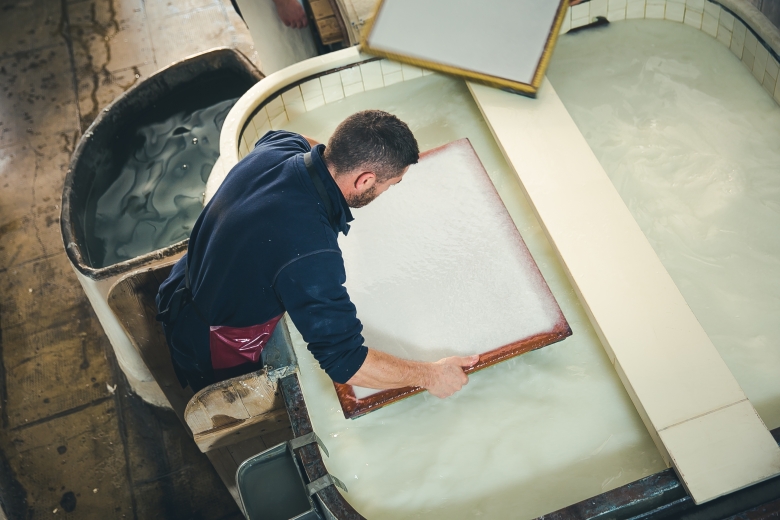
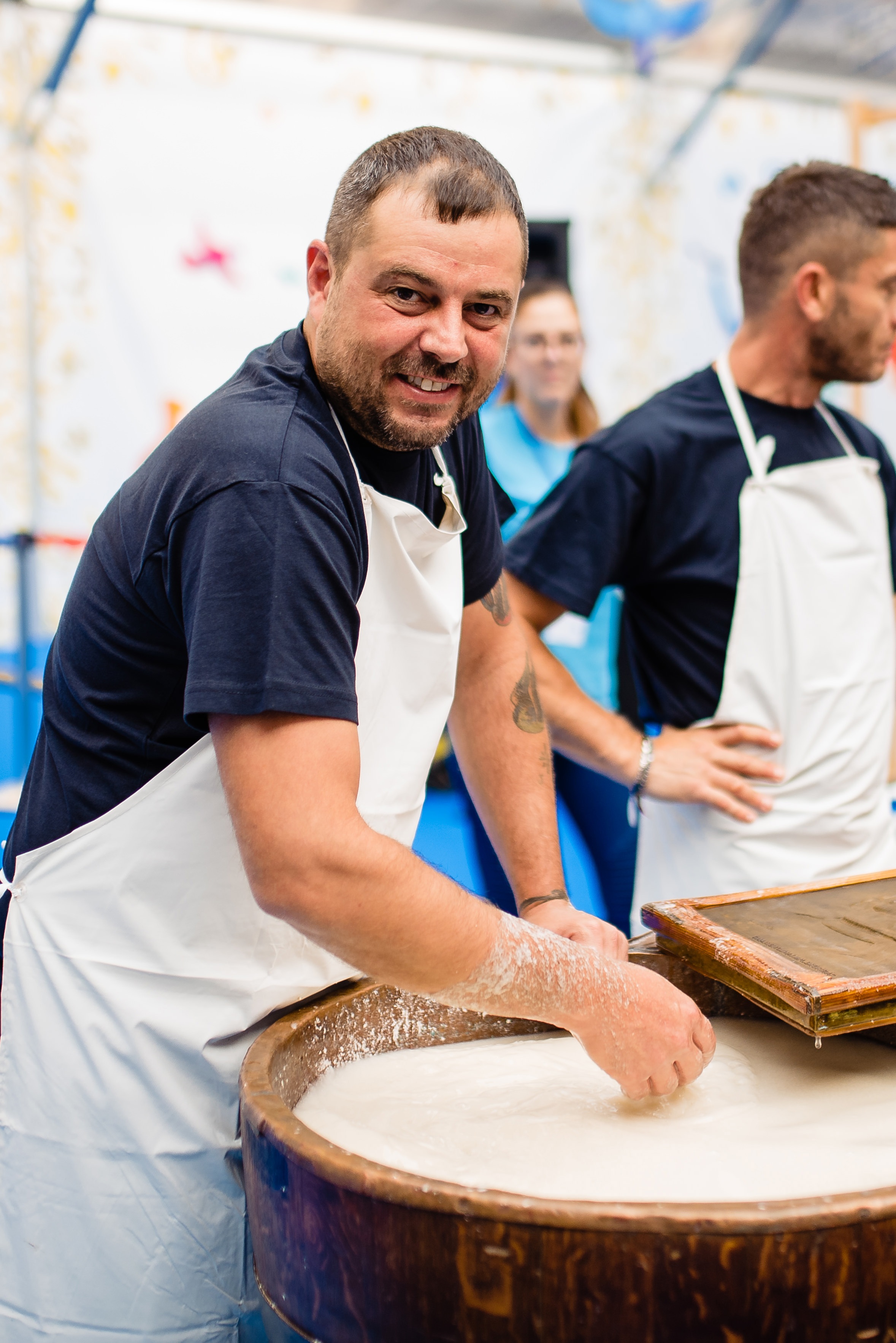
Riccardo Biagelli has been working at the Fabriano paper mill for 20 years and was immediately immersed into the art of handmade papermaking. Riccardo describes it as ‘love at first sight’ and has never stopped making paper by hand since he began.
When first joining Fabriano, Riccardo started as a trainee before developing his craft to become an expert and skilful papermaker. Papermakers are normally found in museums or small workshops, making Riccardo at Fabriano a rarity.
Creative Moment: Expert papermakers are rare. Can you tell me about what is involved?
Riccardo Biagelli: Being a subsidiary of Fedrigoni Paper, technological advances across the ages are championed to help paper makers with processing paper down the manufacturing line. For example, holland beaters are used to prepare the pulp prior to moulding into paper sheets, and hydraulic presses are utilised to squeeze out all the excess water in the paper.
But the craft truly begins at the moulding stage. If you don’t achieve even consistency throughout the sheet then it’ll be useless to an artist.
It takes patience, resilience and attentiveness to get it right over and over and over again.
As far as I am concerned, handmade paper is a continuous creation because each sheet is unique and is the result of skilful movements that are always repeated. Each sheet, however, has small differences that are the result of the moment and for this reason is an art in itself.
CM: What is the training for someone who wants to work in this industry?
RB: My specific training originated with the Fabriano technical school for paper experts, which has been training professionals for paper mills all over the world for many years. When I joined the paper mill, I refined my hand-papermaking technique by applying the basic techniques learnt at school.
Fundamental to improving and refining the technique was the teaching of experienced master papermakers who had already been working in the mill for many years: This is definitely the best school.
It took me about five years to become autonomous in making paper by hand, because the training is very complex and physical.
And a benefit of being a part of the Fedrigoni group is its openness to experimenting with new processes that can help us paper makers produce our works of art more efficiently.
You start with a steel plate weighing about twelve kilograms and a water vat to learn how to master the papermaking mould, before being able to make sheets of paper with a uniform weight and thickness. The objective of the training is to leave a film of water covering the surface of the plate. This training lasted for about a year, during which I was learning from various experts involved in the production process (refining, couching, sizing and air sheet drying).
Towards the end of my first year, I started to make the actual handmade paper under the careful supervision of my master.
CM: What do you love about the job?
The satisfaction of creating something unique accompanied by a strong passion; these two elements are key in sustaining the craft.
It is very hard work as the moulds we use, also known as a production form, weigh about thirteen kilograms and repeatedly lifting this weight throughout the day takes endurance. But the satisfaction of seeing works of art created on one's own sheet of paper repays all the effort put in.
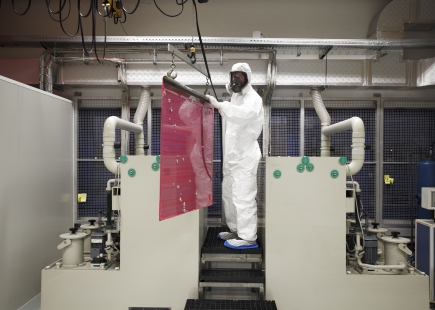
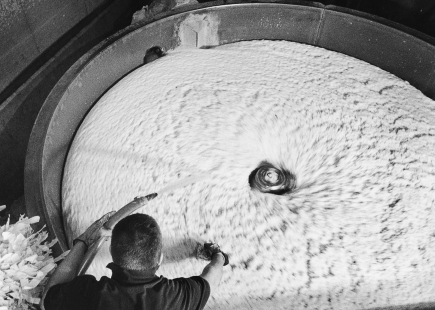
CM: How would someone take the first step into this line of work?
All the workers in the Fabriano paper mill are from the very same town or the surrounding areas, and everyone knows the opportunity that lies working for Fedrigoni and Fabriano.
Usually, the first step is to study at the local Technical Institute for Papermakers. This high school is unique in Italy, offering the chance to study the chemistry and mechanical foundation of paper (in addition to general education on literature, history and foreign languages). After completing five years of studying, the student is employed by the paper mill as a trainee for six months.
This gives the paper mill the time to evaluate the craftsperson, and at the same time the student can start to apply what they studied. This programme opens the possibility to work in paper mills all across the globe and the Fedrigoni brand.
Being born in and having lived in Fabriano, the city of paper par excellence, it is almost natural to enter the paper mill.
I come from a family of papermakers, so the skill was already a part of me.
The passion for paper is a tradition handed down from father to son, almost a vocation.
What do you think is the most memorable piece of work you have created to date?
RB: Personally, I am very attached to the first artistic watermarks that I made with my own hands.
Artistic watermarks are a unique feature of the Fabriano papermaking tradition and consist of reproducing a painting, a statue, a landscape or a portrait of a famous person onto a thin sheet of paper. One must be truly skilled. I remember that when I made the watermark of the Frasassi caves, I got excited.
The filigree against the light was exactly like the caves I had visited as a child.
The Frasassi caves are a very famous tourist resort 10 kilometres from Fabriano. I went on a school trip as a child and discovered - with amazement - the wonders of stone created by nature over millennia.
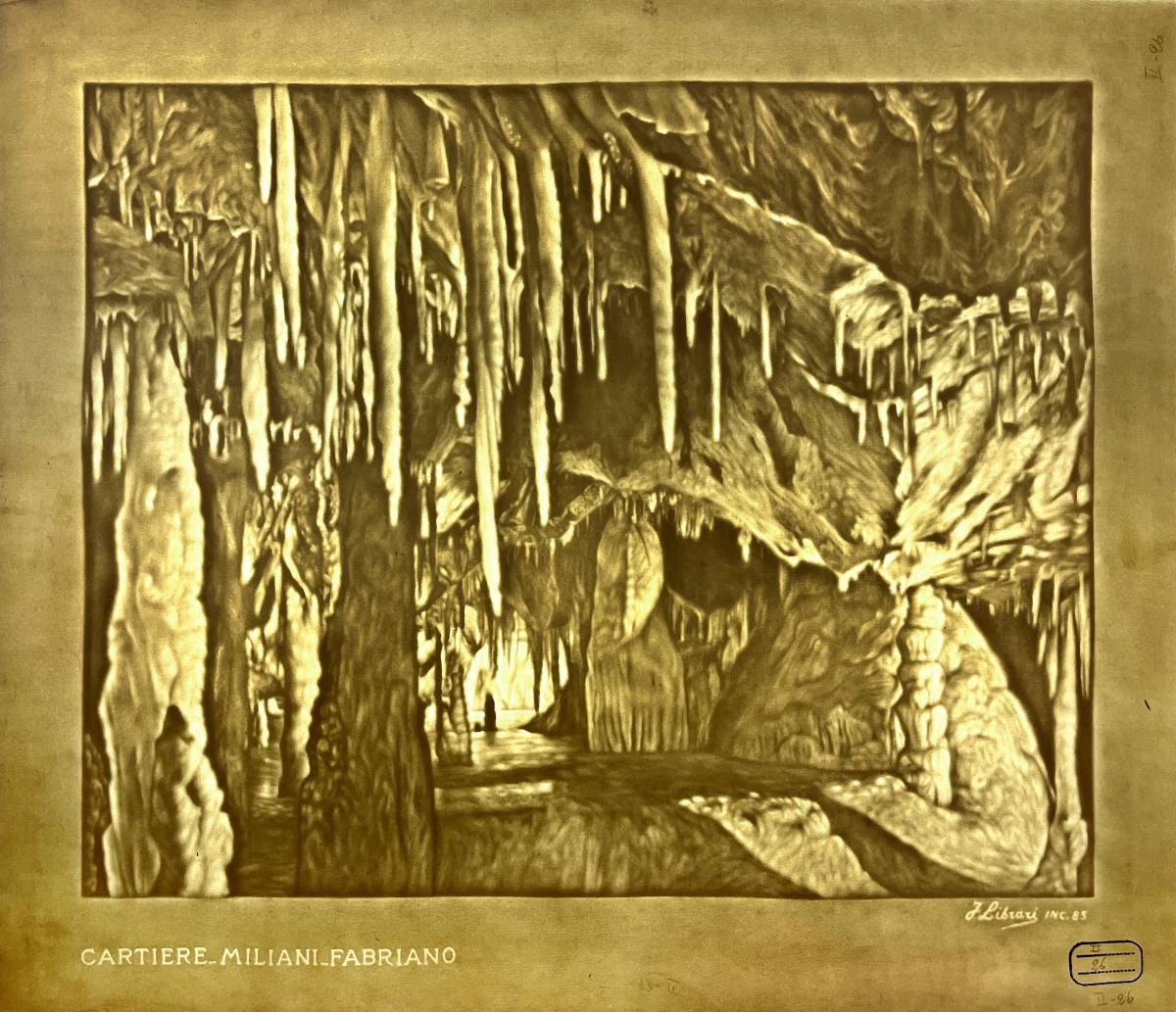
If you enjoyed this article, you can subscribe for free to our weekly email alert and receive a regular curation of the best creative campaigns by creatives themselves.
Published on:


